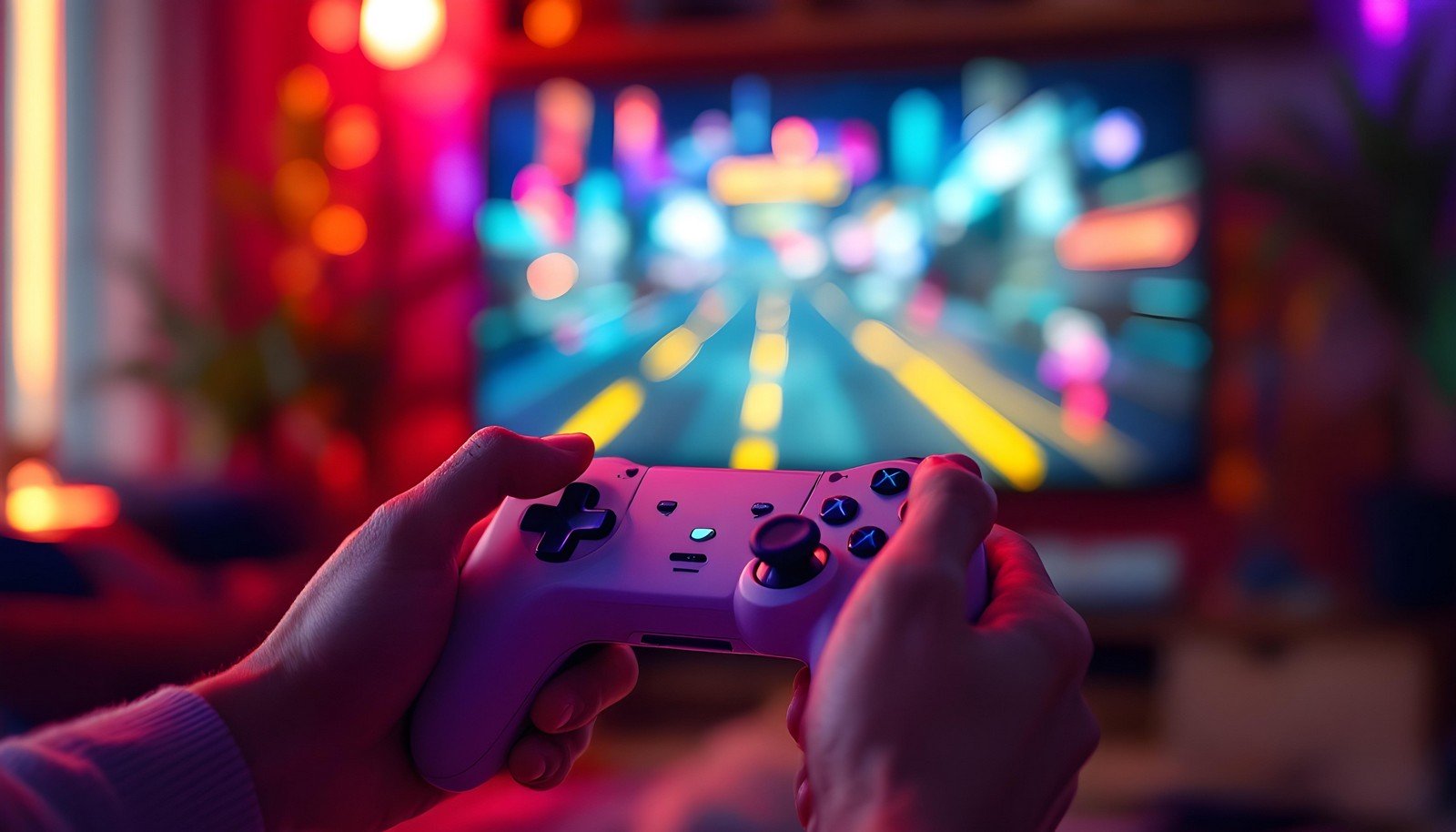Haptic Feedback Controller

Quick Navigation:
- Haptic Feedback Controller Definition
- Haptic Feedback Controller Explained Easy
- Haptic Feedback Controller Origin
- Haptic Feedback Controller Etymology
- Haptic Feedback Controller Usage Trends
- Haptic Feedback Controller Usage
- Haptic Feedback Controller Examples in Context
- Haptic Feedback Controller FAQ
- Haptic Feedback Controller Related Words
Haptic Feedback Controller Definition
A haptic feedback controller is a device used primarily in gaming and simulation systems to provide tactile feedback to users. It simulates real-world sensations like vibration, pressure, or motion through actuators, enhancing the immersive experience. These controllers are integral to virtual reality (VR) and augmented reality (AR) setups, where realistic touch and interaction are critical. The technology relies on small motors or electroactive materials to create precise, localized feedback in response to user inputs or environmental factors in digital experiences.
Haptic Feedback Controller Explained Easy
Think of it like a magic controller that lets you feel the game you're playing. If you're racing a car, you might feel the bumps on the road or the car's engine vibrations. If you're in a sword fight, you could feel the clash of swords. It's like the controller talks to your hands and lets you feel what's happening in the game.
Haptic Feedback Controller Origin
The development of haptic feedback technology began in the late 20th century, with its initial applications in robotics and aerospace. By the early 2000s, the technology found its way into consumer electronics, particularly gaming, as developers sought to make digital interactions more realistic and engaging.
Haptic Feedback Controller Etymology
The term "haptic" originates from the Greek word "haptikos," meaning "able to touch or perceive." The concept of feedback refers to the tactile responses provided by the controller.
Haptic Feedback Controller Usage Trends
Haptic feedback controllers have seen a steady rise in popularity, especially with advancements in gaming and VR technology. The PlayStation DualSense controller, for instance, has set a benchmark for integrating haptic feedback, inspiring other manufacturers to innovate. The demand for more immersive experiences in gaming, training simulations, and even medical procedures has driven the growth of this technology.
Haptic Feedback Controller Usage
- Formal/Technical Tagging:
- Virtual Reality
- Augmented Reality
- Gaming Technology - Typical Collocations:
- "haptic feedback controller technology"
- "immersive gaming experience"
- "adaptive haptic responses"
Haptic Feedback Controller Examples in Context
- A racing game controller vibrates to simulate the feel of driving on gravel.
- A VR sword-fighting game uses haptic feedback to mimic the sensation of clashing blades.
- In medical training, a haptic feedback controller provides tactile simulation for surgical procedures.
Haptic Feedback Controller FAQ
- What is a haptic feedback controller?
It’s a controller that provides physical feedback, like vibrations, to simulate real-world sensations. - Where is haptic feedback used?
It’s used in gaming, VR/AR, medical simulations, and even smartphones. - What makes haptic feedback unique?
It enhances the sense of touch, making digital interactions more immersive. - How does a haptic feedback controller work?
It uses actuators to create vibrations or motions based on user actions or game events. - Can haptic feedback improve gaming?
Yes, it adds realism and immersion to the gameplay experience. - Are haptic feedback controllers expensive?
Prices vary, but advanced controllers with detailed feedback can be costly. - What are the limitations of haptic feedback?
Limited resolution of sensations and potential battery drain are common issues. - Which gaming consoles use haptic feedback controllers?
Popular examples include PlayStation's DualSense and certain Xbox controllers. - Is haptic feedback important in VR?
Yes, it’s crucial for creating realistic and engaging virtual experiences. - What’s the future of haptic feedback technology?
Innovations include finer tactile resolution and applications in wearable devices.
Haptic Feedback Controller Related Words
- Categories/Topics:
- Immersive Technology
- Tactile Feedback
- Gaming Accessories
Did you know?
In 2020, the PlayStation 5 DualSense controller revolutionized gaming by introducing adaptive triggers and advanced haptic feedback, allowing players to feel the tension of pulling a bowstring or the impact of footsteps on different surfaces.
PicDictionary.com is an online dictionary in pictures. If you have questions or suggestions, please reach out to us on WhatsApp or Twitter.Authors | Arjun Vishnu | @ArjunAndVishnu

I am Vishnu. I like AI, Linux, Single Board Computers, and Cloud Computing. I create the web & video content, and I also write for popular websites.
My younger brother, Arjun handles image & video editing. Together, we run a YouTube Channel that's focused on reviewing gadgets and explaining technology.



Comments powered by CComment